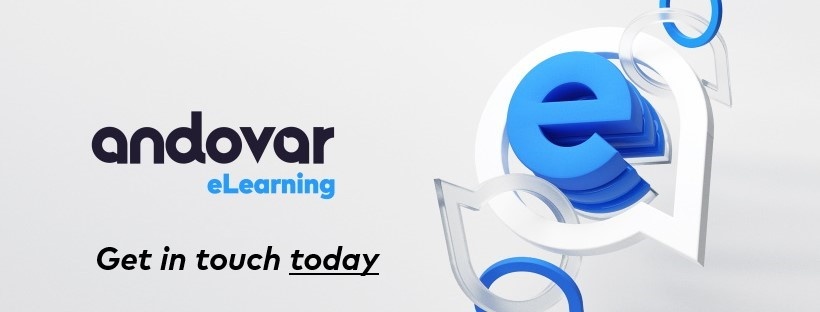Does your travel company have a global presence? Hotels, airlines and tour companies can greatly benefit from multilingual training. By creating online content, you can easily localize your training programs into the languages of your workforce. Even if the majority of your workforce speaks a predominant language, you can strengthen your entire team with accessible training material in the native language of each employee.
Approximately 65% of employees polled by Forbes feel there is a language barrier between the leadership team and the rest of the company. Starting with training and orientation materials, bridging that gap ensures that employees can stay in step with the vision of the executive team.
At Andovar, we understand that many people move across international borders to work in the travel industry. That’s why we create tools that break through the language barrier with effective training materials. To attract the best multicultural workforce, your content (text, videos and other formats) needs to speak their language.
Languages to Target for Multilingual Training
Most travel-related companies have a diverse workforce, and your training materials should reflect the needs of your staff. However, traditional hiring trends typically resulted in a large percentage of employees with English proficiency. With emerging markets opening in Asia, South America and the Middle East, your boots on the ground are probably already changing to match demand.
In the travel industry, patrons want to deal with travel agents and hoteliers that speak their language, especially during the planning stage. According to a recent study by EPI, some of the emerging nations have low English proficiency, meaning your training materials will have to adapt to support languages such as the following.
- Emerging markets: Thailand, Vietnam, Indonesia, Middle Eastern and Latin American countries.
- Mature markets (English and local languages important): Spain, France, China, South Korea and Japan.
First, it’s important to isolate the emerging trends that will drive your business and hiring practices. Then, build modular training courses that your staff members can consume in their native languages.
Tips on Localizing Training Materials
There are two possible approaches after you have an approved course with completed modules in the source language. You can translate it directly into the target languages for your employee base, or you can try to adjust the content for local context. The second approach allows you to create scenarios specific to the regions served by your travel agency, hotel, or other travel related business.
Courses are typically made up of graphics, text, and images. Each component requires a unique approach when it comes to localizing content. For example, you may add different logos, photos and other elements to make the content more relatable for different groups of trainees.
Here are some tips on how to maximize your localization efforts for different types of content:
- Images – Use cultural sensitivity for photos, charts and graphs.
- Symbols and animation – Choose mascots, icons and symbols that have regional significance without offending staff members from different backgrounds.
- Colors – Partner with local consultants to determine the best colors for different areas, based on regional affinities.
- Idioms and slang are different, even for people speaking the same language in different regions. This is an important factor to creating effective training materials.
Gender, age and business hierarchy all play a role in how your employees will digest training materials. So, the more customization you can do within your budget, the better. Our guide to elearning and location provides essential information on how to choose the right language and platform for your multilingual training program.
Make It Mobile and Modular
Creating material that your employees can access online allows them to complete training at work, at home, on the bus, or in a cafe. However, it’s equally important to format videos and text content in easy to digest snippets. Since smartphones and mobile devices have become ubiquitous, it also makes sense to ensure that your content presents well on mobile phones and tablets as well as laptops.
We also suggest using social media to connect to your employees in their native languages. This is a great way to distribute updated modules, launch refresher training programs and encourage employees to sign up for localized skills training.
Working With Andovar to Localize Your Multilingual Training
Andovar can provide the tools needed to translate text, dub or voice over videos, and create unique content that accounts for cultural differences. Additionally, we use a Translation Management System to help you manage content built in different formats and written by many writers. This system contains a powerful AI that automates the workflow from your content management system to Andovar’s translation tools, and vice versa.
Andovar has 15 years of experience translating eLearning content for the travel industry. We encourage you to speak to our language and localization experts to find out how to address your multilingual training needs. Contact us today to schedule a demo.














